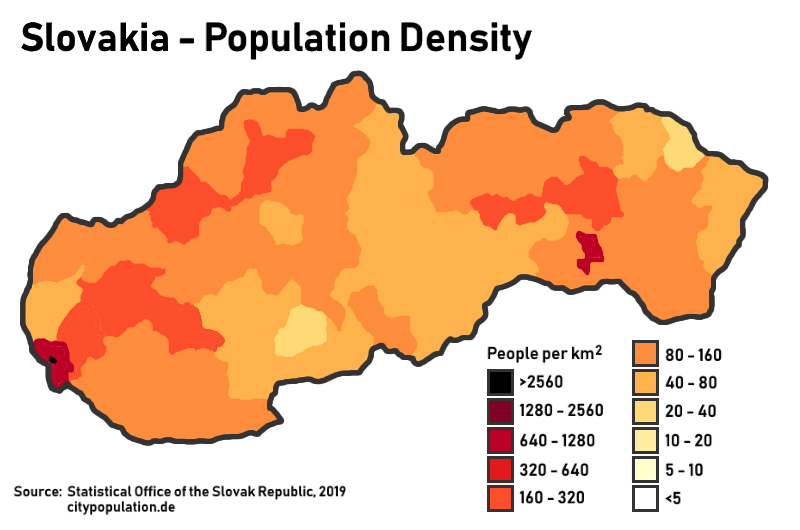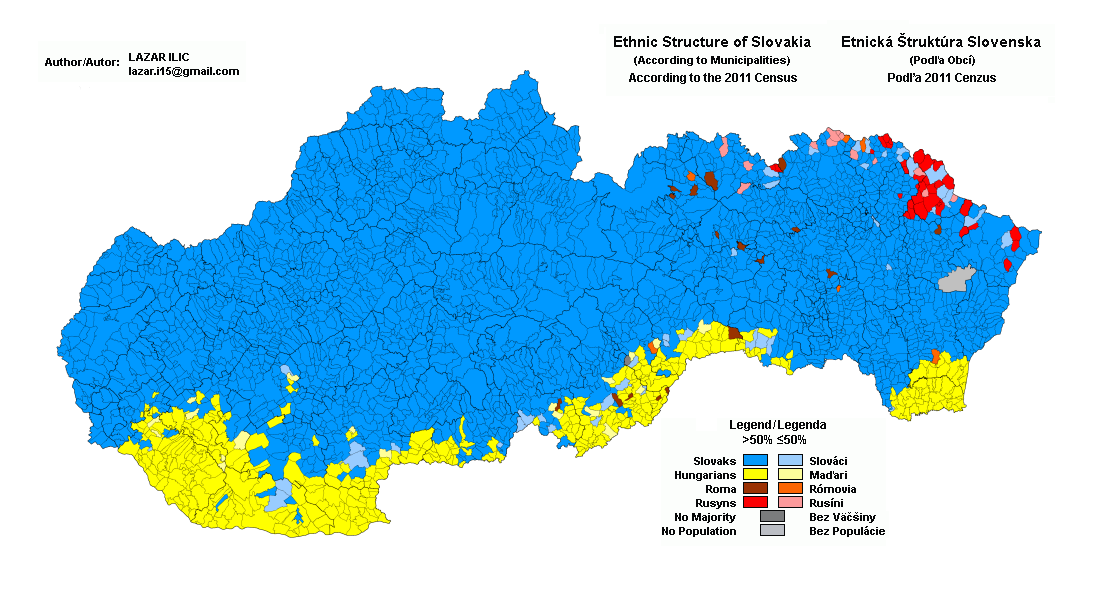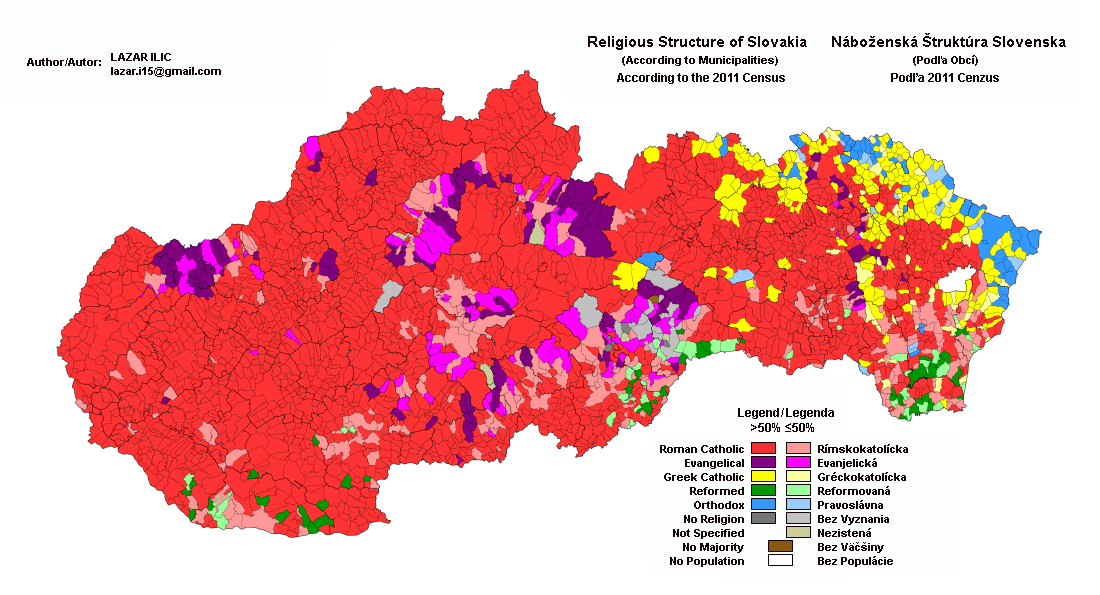Demographics Of Slovakia on:
[Wikipedia]
[Google]
[Amazon]
 This article is about the
This article is about the
 The
The

 The majority of the 5.4 million inhabitants of
The majority of the 5.4 million inhabitants of
 The Slovak constitution guarantees
The Slovak constitution guarantees
''Sborník Fr. Pestyho Helység névtara-Seznam osad v Uhrách z r. 1864-65, : jako pramen historicko-demografických údajů o slovenských a karpatoruských osadách.''
Praha : Česká akademie věd a umění, 1927. 174 s. - available online at
 This article is about the
This article is about the demographic
Demography () is the statistical study of populations, especially human beings.
Demographic analysis examines and measures the dimensions and dynamics of populations; it can cover whole societies or groups defined by criteria such as edu ...
features of the population
Population typically refers to the number of people in a single area, whether it be a city or town, region, country, continent, or the world. Governments typically quantify the size of the resident population within their jurisdiction using a ...
of Slovakia
Slovakia (; sk, Slovensko ), officially the Slovak Republic ( sk, Slovenská republika, links=no ), is a landlocked country in Central Europe. It is bordered by Poland to the north, Ukraine to the east, Hungary to the south, Austria to the s ...
, including population density
Population density (in agriculture: standing stock or plant density) is a measurement of population per unit land area. It is mostly applied to humans, but sometimes to other living organisms too. It is a key geographical term.Matt RosenberPopul ...
, ethnicity
An ethnic group or an ethnicity is a grouping of people who identify with each other on the basis of shared attributes that distinguish them from other groups. Those attributes can include common sets of traditions, ancestry, language, history, ...
, education level, health of the populace, economic status, religious affiliations Religious identity is a specific type of identity formation. Particularly, it is the sense of group membership to a religion and the importance of this group membership as it pertains to one's self-concept. Religious identity is not necessarily the ...
and other aspects of the population. The demographic statistics are from the Statistical Office of the SR, unless otherwise indicated.
Population
Total population: (as of ). Demographic statistics according to the World Population Review in 2021. *One birth every 10 minutes *One death every 9 minutes *One net migrant every 480 minutes *Net gain of one person every 1440 minutesPopulation overtime
Population growth rate
:-0.08% (2021 est.) Country comparison to the world: 202ndFertility
 The
The total fertility rate
The total fertility rate (TFR) of a population is the average number of children that would be born to a woman over her lifetime if:
# she were to experience the exact current age-specific fertility rates (ASFRs) through her lifetime
# she were t ...
is the number of children born per woman. It is based on fairly good data for the entire period. Sources: Our World In Data
Our World in Data (OWID) is a scientific online publication that focuses on large global problems such as poverty, disease, hunger, climate change, war, existential risks, and inequality.
It is a project of the Global Change Data Lab, a re ...
and Gapminder Foundation
Gapminder Foundation is a non-profit venture registered in Stockholm, Sweden, that promotes sustainable global development and achievement of the United Nations Millennium Development Goals by increased use and understanding of statistics and ...
.
1.45 children born/woman (2021 est.) Country comparison to the world: 211th
Mother's mean age at first birth
:27.2 years (2019 est.)Life expectancy
:total population: 78.07 years :male: 74.56 years :female: 81.82 years (2021 est.)Age structure
:''0-14 years:'' 15.13% (male 423,180 /female 400,128) :''15-24 years:'' 10.06% (male 280,284 /female 266,838) :''25-54 years:'' 44.61% (male 1,228,462 /female 1,198,747) :''55-64 years:'' 13.15% (male 342,142 /female 373,452) :''65 years and over:'' 17.05% (male 366,267 /female 561,120) (2020 est.)Median age
:total: 41.8 years. Country comparison to the world: 41st :male: 40.1 years :female: 43.6 years (2020 est.)Vital statistics
Current vital statistics
Languages
Slovak (official) 81.77%, Hungarian 8.48%, Roma 1.84%,Rusyn
Rusyn may refer to:
* Rusyns, Rusyn people, an East Slavic people
** Pannonian Rusyns, Pannonian Rusyn people, a branch of Rusyn people
** Lemkos, a branch of Rusyn (or Ukrainian) people
** Boykos, a branch of Rusyn (or Ukrainian) people
* Rusyn l ...
0.71%, other or unspecified 7.2% (2021 census)
Employment and income
Unemployment, youth ages 15–24
:Total: 19.4%. Country comparison to the world: 81st :Male: 18.3% :Female: 21.2% (2020 est.)Ethnic groups

Slovakia
Slovakia (; sk, Slovensko ), officially the Slovak Republic ( sk, Slovenská republika, links=no ), is a landlocked country in Central Europe. It is bordered by Poland to the north, Ukraine to the east, Hungary to the south, Austria to the s ...
are Slovak (83.82%). Hungarians
Hungarians, also known as Magyars ( ; hu, magyarok ), are a nation and ethnic group native to Hungary () and historical Hungarian lands who share a common culture, history, ancestry, and language. The Hungarian language belongs to the Urali ...
are the largest ethnic minority (7.75%) and are concentrated in the southern and eastern regions of Slovakia. Other ethnic groups include Roma
Roma or ROMA may refer to:
Places Australia
* Roma, Queensland, a town
** Roma Airport
** Roma Courthouse
** Electoral district of Roma, defunct
** Town of Roma, defunct town, now part of the Maranoa Regional Council
*Roma Street, Brisbane, a ...
(1.23%), Czechs
The Czechs ( cs, Češi, ; singular Czech, masculine: ''Čech'' , singular feminine: ''Češka'' ), or the Czech people (), are a West Slavic ethnic group and a nation native to the Czech Republic in Central Europe, who share a common ancestry, c ...
, Croats
The Croats (; hr, Hrvati ) are a South Slavic ethnic group who share a common Croatian ancestry, culture, history and language. They are also a recognized minority in a number of neighboring countries, namely Austria, the Czech Republic, G ...
, Rusyns
Rusyns (), also known as Carpatho-Rusyns (), or Rusnaks (), are an East Slavs, East Slavic ethnic group from the Carpathian Rus', Eastern Carpathians in Central Europe. They speak Rusyn language, Rusyn, an East Slavic languages, East Slavi ...
, Ukrainians
Ukrainians ( uk, Українці, Ukraintsi, ) are an East Slavs, East Slavic ethnic group native to Ukraine. They are the seventh-largest nation in Europe. The native language of the Ukrainians is Ukrainian language, Ukrainian. The majority ...
, Germans
, native_name_lang = de
, region1 =
, pop1 = 72,650,269
, region2 =
, pop2 = 534,000
, region3 =
, pop3 = 157,000
3,322,405
, region4 =
, pop4 = ...
, Poles
Poles,, ; singular masculine: ''Polak'', singular feminine: ''Polka'' or Polish people, are a West Slavic nation and ethnic group, who share a common history, culture, the Polish language and are identified with the country of Poland in Ce ...
, Gorals
The Gorals ( pl, Górale; Goral dialect: ''Górole''; sk, Gorali; Cieszyn Silesia dialect, Cieszyn Silesian: ''Gorole''), also known as the Highlanders (in Poland as the Polish Highlanders) are an indigenous ethnographic or ethnic group primar ...
, Serbs
The Serbs ( sr-Cyr, Срби, Srbi, ) are the most numerous South Slavic ethnic group native to the Balkans in Southeastern Europe, who share a common Serbian ancestry, culture, history and language.
The majority of Serbs live in their na ...
and Jews
Jews ( he, יְהוּדִים, , ) or Jewish people are an ethnoreligious group and nation originating from the Israelites Israelite origins and kingdom: "The first act in the long drama of Jewish history is the age of the Israelites""The ...
(about 2,300 remain of the estimated pre-WWII
World War II or the Second World War, often abbreviated as WWII or WW2, was a world war that lasted from 1939 to 1945. It involved the vast majority of the world's countries—including all of the great powers—forming two opposin ...
population of 120,000).
While both international organizations (the United Nations and the World Bank) and the official Slovak statistics office offer population figures for ethnic groups, these figures seldom come close to agreement. Figures for the Roma population (for a variety of reasons) vary between 1% and 10% of the population. In the most recent survey carried out by the Slovak Government's Roma Plenipotentiary, the figure for the percentage of Roma was arrived at through interview with municipality representatives and mayors, according to how many Roma they think live in their jurisdictions. The figure arrived at by this means was in the region of 300,000 (about 5.6%). Note that in the case of the 5.6%, however, the above percentages of Hungarians and Slovaks are lower accordingly.
The official state language is Slovak, and Hungarian is widely spoken in the southern regions.
Despite its modern Europe
Europe is a large peninsula conventionally considered a continent in its own right because of its great physical size and the weight of its history and traditions. Europe is also considered a Continent#Subcontinents, subcontinent of Eurasia ...
an economy and society, Slovakia has a significant rural element. About 45% of Slovaks live in villages with fewer than 5,000 inhabitants, and 14% in villages with fewer than 1,000.
Religion
 The Slovak constitution guarantees
The Slovak constitution guarantees freedom of religion
Freedom of religion or religious liberty is a principle that supports the freedom of an individual or community, in public or private, to manifest religion or belief in teaching, practice, worship, and observance. It also includes the freedom ...
. The majority of Slovak citizens (55,76%) practice Roman Catholicism
The Catholic Church, also known as the Roman Catholic Church, is the List of Christian denominations by number of members, largest Christian church, with 1.3 billion baptized Catholics Catholic Church by country, worldwide . It is am ...
; the second-largest group consider themselves atheists (23.79%). About 5.27% are Protestants
Protestantism is a branch of Christianity that follows the theological tenets of the Protestant Reformation, a movement that began seeking to reform the Catholic Church from within in the 16th century against what its followers perceived to b ...
, 4% are Greek Catholics The term Greek Catholic Church can refer to a number of Eastern Catholic Churches following the Byzantine (Greek) liturgy, considered collectively or individually.
The terms Greek Catholic, Greek Catholic church or Byzantine Catholic, Byzantine Ca ...
, and 0.93% are Orthodox
Orthodox, Orthodoxy, or Orthodoxism may refer to:
Religion
* Orthodoxy, adherence to accepted norms, more specifically adherence to creeds, especially within Christianity and Judaism, but also less commonly in non-Abrahamic religions like Neo-pa ...
and Reformed Christian
Calvinism (also called the Reformed Tradition, Reformed Protestantism, Reformed Christianity, or simply Reformed) is a major branch of Protestantism that follows the theological tradition and forms of Christian practice set down by John Calv ...
Church 1.56% (2021 census).
See also
* Roma in SlovakiaReferences
External links
* * * (in Czech) summary of villages in Hungary in 1864 - 1865, PETROV, Alexej Leonidovich''Sborník Fr. Pestyho Helység névtara-Seznam osad v Uhrách z r. 1864-65, : jako pramen historicko-demografických údajů o slovenských a karpatoruských osadách.''
Praha : Česká akademie věd a umění, 1927. 174 s. - available online at
University Library in Bratislava Digital Library
University Library in Bratislava (ULB) is the oldest library in Slovakia. It was founded in 1919 in Bratislava. Today, it is the largest and most visited library in Slovakia and it is a universal state research library.
History
The library was ...
{{Demographics of Europe
Society of Slovakia